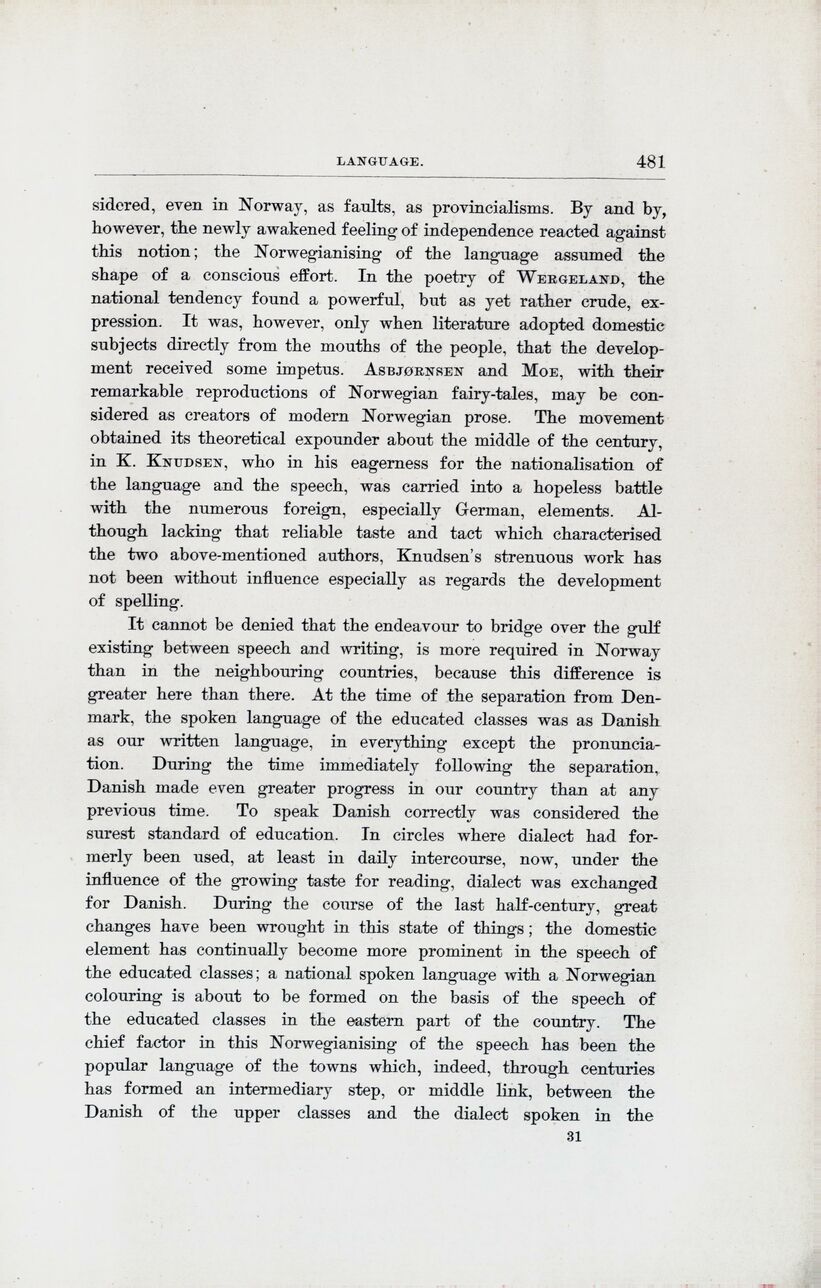
Full resolution (JPEG) - On this page / på denna sida - Language, by Hj. Falk

<< prev. page << föreg. sida << >> nästa sida >> next page >>
Below is the raw OCR text
from the above scanned image.
Do you see an error? Proofread the page now!
Här nedan syns maskintolkade texten från faksimilbilden ovan.
Ser du något fel? Korrekturläs sidan nu!
This page has been proofread at least once.
(diff)
(history)
Denna sida har korrekturlästs minst en gång.
(skillnad)
(historik)
considered, even in Norway, as faults, as provincialisms. By and by,
however, the newly awakened feeling of independence reacted against
this notion; the Norwegianising of the language assumed the
shape of a conscious effort. In the poetry of Wergeland, the
national tendency found a powerful, but as yet rather crude,
expression. It was, however, only when literature adopted domestic
subjects directly from the mouths of the people, that the
development received some impetus. Asbjørnsen and Moe, with their
remarkable reproductions of Norwegian fairy-tales, may be
considered as creators of modern Norwegian prose. The movement
obtained its theoretical expounder about the middle of the century,
in K. Knudsen, who in his eagerness for the nationalisation of
the language and the speech, was carried into a hopeless battle
with the numerous foreign, especially German, elements.
Although lacking that reliable taste and tact which characterised
the two above-mentioned authors. Knudsen’s strenuous work has
not been without influence especially as regards the development
of spelling.
It cannot be denied that the endeavour to bridge over the gulf
existing between speech and writing, is more required in Norway
than in the neighbouring countries, because this difference is
greater here than there. At the time of the separation from
Denmark, the spoken language of the educated classes was as Danish
as our written language, in everything except the
pronunciation. During the time immediately following the separation,
Danish made even greater progress in our country than at any
previous time. To speak Danish correctly was considered the
surest standard of education. In circles where dialect had
formerly been used, at least in daily intercourse, now, under the
influence of the growing taste for reading, dialect was exchanged
for Danish. During the course of the last half-century, great
changes have been wrought in this state of things; the domestic
element has continually become more prominent in the speech of
the educated classes; a national spoken language with a Norwegian
colouring is about to be formed on the basis of the speech of
the educated classes in the eastern part of the country. The
chief factor in this Norwegianising of the speech has been the
popular language of the towns which, indeed, through centuries
has formed an intermediary step, or middle link, between the
Danish of the upper classes and the dialect spoken in the
<< prev. page << föreg. sida << >> nästa sida >> next page >>